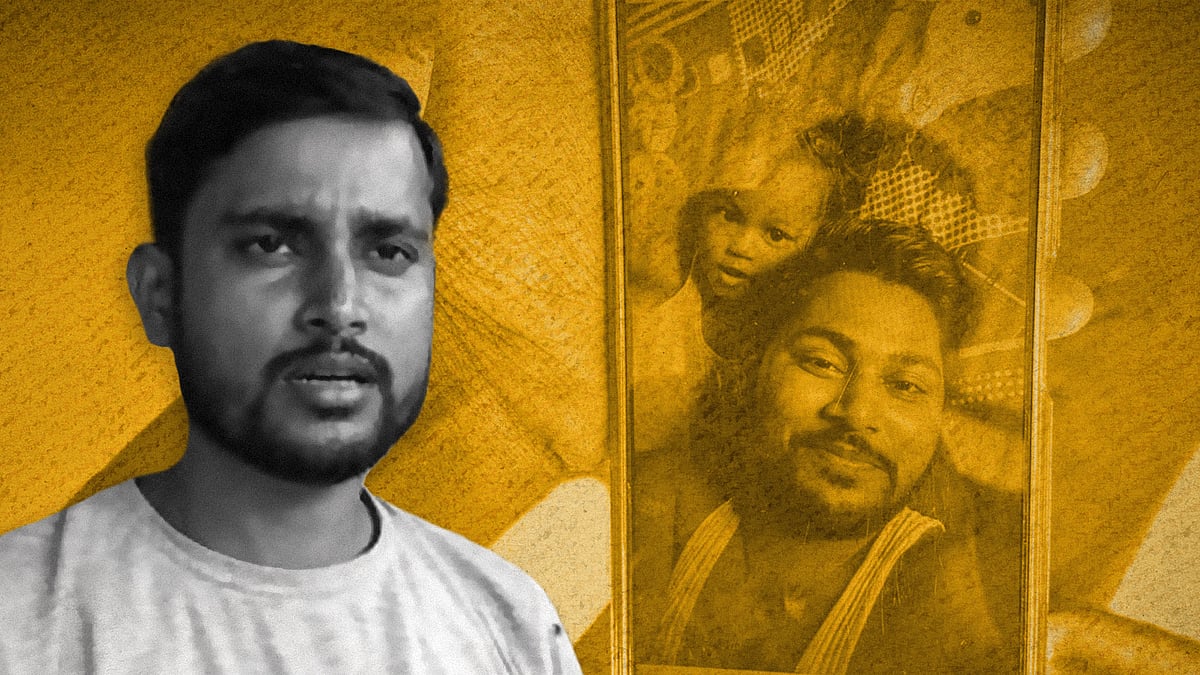As we celebrate the Maria Ressas of the world, let's not forget the Raman Kashyaps
Media houses need to back grassroots news-gatherers, many of whom put themselves at risk in the line of work.
On October 3, Raman Kashyap, a journalist not known outside the place where he worked, was killed. He was covering a farmers' protest in Lakhimpur Kheri. He was one of the eight people killed when a car rammed into the protesters and in the violence that followed.
A week later, on October 8, the Nobel Prize Committee announced the recipients of this year's Peace Prize: two well-known journalists from the Philippines and Russia. Both have been recognised for their courageous journalism in their respective countries. Both have fallen foul of their governments. Both are determined to continue doing what they have been doing for years. As the chair of the Norwegian Nobel Committee said when announcing the award, they were chosen not just for their courage but also as “representatives of all journalists who stand up for this ideal in a world in which democracy and freedom of the press face increasingly adverse conditions.”
Maria Ressa and Dimitry Muratov's selection for the Nobel Peace Prize has sent out a strong message of encouragement to other journalists like them around the world, but also to governments who continue to deny press freedom that their actions are being noted.
There is much we can learn from the work of both these journalists. Apart from their courage and their persistence in doing what they see as their primary duty as journalists, to be unafraid to investigate and report the wrongdoings of the powerful, their life and work also illustrate the importance of building institutions with people who can make this kind of work possible.
Maria Ressa is one of the founders of the website Rappler that has taken on the Philippines government led by president Eduardo Duterte. Dimitry Muratov established Noyava Gazeta in 1993 and continues to write fearlessly despite living under the regime of Vladimir Putin that permits little by way of press freedom.
But even as we celebrate the Nobel Peace Prize for Ressa and Muratov, let's pause for a moment and think about 35-year-old Raman Kashyap. He was a freelance journalist who sent reports to a local TV channel, Sadhna TV. According to Wikipedia, Sadhna TV is "an Indian spiritual television network owned and operated by Sadhna Group. It was launched on 18 April 2003."
Kashyap had joined the channel just two months ago according to his family. His other job was as a schoolteacher. He was married with two children aged 11 and three. He earned around Rs 500 for every story he filed, if it was used.
There are thousands of Raman Kashyaps who are a part of the media scene in India. But they are hardly ever recognised or even acknowledged. Kashyap has gained more fame in his death than he ever would have had he lived and continued to work as a district journalist.
In fact, his death throws a light on this army of underpaid and even unpaid news-gatherers that are so vital to the news business.
Sevanti Ninan, in her seminal book Headlines from the Heartland (Sage, 2007) recorded the growth of this hidden army of news-gatherers. They are not even designated as journalists. Most of them are not trained. And many do other jobs and fill in as journalists, or stringers, when required.
This process of localisation of news, which began in the mid-1980s, really took off in the 1990s. By then private television channels had entered the media scene. They swept up a large chunk of advertising that would have gone to print media.
This is when regional newspapers, starting with Eenadu in Andhra Pradesh followed by big Hindi newspapers like Dainik Jagran, Dainik Bhaskar and Hindustan, began the process of localisation. Beginning with introducing pages that accommodated district news, they even went on to have district editions. The aim was to sweep up local advertising as well as readership. This was a strategy to leverage their reach into semi-urban and rural areas with the big consumer products companies that wanted to reach these markets.
The formula worked as was evident in the growing circulation of these papers. But alongside, this also spawned a new breed of journalist. These men were tasked not just to report, but also to bring in advertising. Payment was by way of commission based on the amount of advertising they brought in. The reporting was mostly unpaid. But the person got a visiting card that identified him as a representative of a media group. That was currency in these rural settings; it gave the person status and some legitimacy.
According to Ninan, "Without exception every localisation drive in India's Hindi heartland was riding on the willing backs of a host of largely unpaid stringers, filing quantities of miscellaneous news from their immediate neighbourhood." (page 116) She notes that newspapers like Dainik Jagran or Hindustan would have, at any time, from 200 to 1000 stringers in a state. Ninan's book is replete with many fascinating details about the localisation of news and is worth revisiting as we think of journalists like Kashyap.
Only around 2005 did these newspapers introduce some form of gate keeping, by authenticating the information coming in from their stringers. Given the caste and political hierarchies that operate in a rural setting, how would one know for sure that the information was legitimate? An important step taken was to relieve stringers of the task of collecting advertising, thus removing the very real possibility of conflict of interest.
The process of newsgathering by part-time journalists that began with newspapers continued with television channels, especially the smaller ones. And now, with the advent of the internet and social media, anyone with a smartphone can become a journalist. To have eyes and ears on the ground with minimal additional investment is something that most media houses would welcome. And that is what they do.
But when one such journalist lands in trouble, or is injured, or even killed, there is no one who comes to his or her aid. As Jitendra Singh, another local journalist from Lakhimpur Kheri tells Shivangi Saxena in this short video posted by Newslaundry on Twitter, no one cares. Even the events of Lakhimpur Kheri would have passed without creating such a stir had the video showing the men being mowed down, shot by a local journalist, not surfaced within a couple of days. It was delayed, as Singh points out, because the internet was shut down and those who had footage could not share it until a couple of days later. He says, "Big Media came after the violence. There wouldn't have been any proof of the violence had we not been there."
That visual proof that these local, poorly paid journalists provide has proven repeatedly to be the essential building block of a larger story. The most recent of these is Lakhimpur Kheri but there are many like this from the past. The reach of Big Media, as Jitendra Singh calls it, would be greatly reduced if these men were not feeding the news machine.
From the perspective of the big media houses, there is always the question of credibility and authenticity of the reports that come, by way of district stringers. But there are ways to double check. The inputs from these stringers provide a lead, much as news agencies with reporters in more places than even the largest newspaper chain have always done. This is what media houses need to acknowledge and back grassroots news-gatherers, many of whom take considerable risks while doing their jobs.
 ‘Using my brother for balancing act’: Lakhimpur journalist’s family say they’re being ‘pressured’
‘Using my brother for balancing act’: Lakhimpur journalist’s family say they’re being ‘pressured’ Local journalist Raman Kashyap killed in Lakhimpur Kheri violence
Local journalist Raman Kashyap killed in Lakhimpur Kheri violence